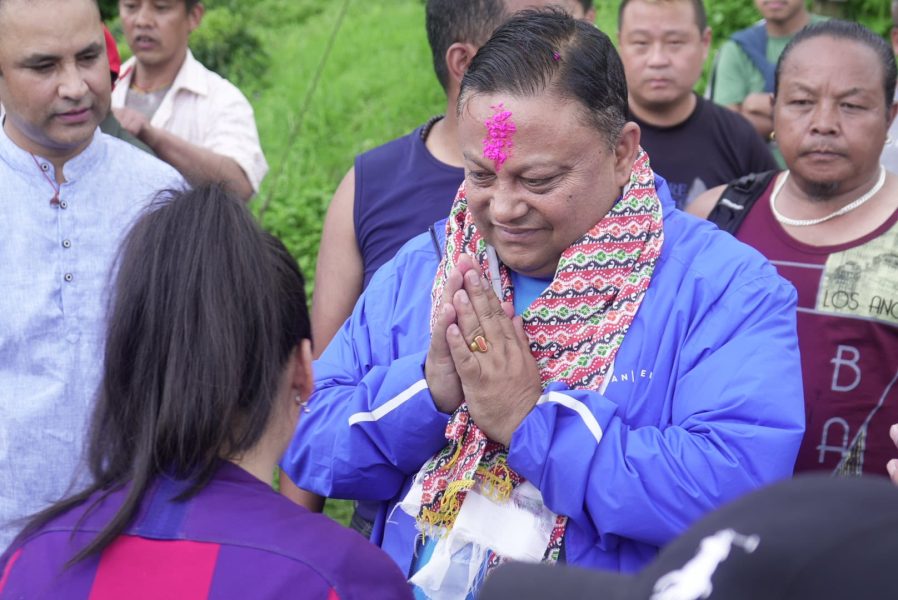
BGPM emerges as dominant political force in Darjeeling hills after Bengal rural polls

In the rural polls, the Bharatiya Gorkha Prajatantrik Morcha (BGPM) established itself as the dominant political party in West Bengal’s northern hills, securing a significant number of panchayat seats in Darjeeling and Kalimpong districts.
Two-tier panchayat elections, as against three-tier polls in the rest of the state, were held in the area under the Gorkhaland Territorial Administration (GTA), a semi-autonomous council already controlled by the BGPM, after 23 years on July 8.
The BGPM, which is led by GTA chief executive Anit Thapa, won 349 of the 598 seats in 70 gram panchayats in Darjeeling district, according to the latest results issued by the district administration.
Also Read: Bengal rural polls: TMC set to sweep, wins 34,359 gram panchayat seats
The BJP, which led an eight-party United Gorkha Alliance against the BGPM in the rural polls, bagged only 59 seats, while Independent candidates secured 185 seats and the TMC won five.
The BGPM also won 96 of 156 panchayat samiti seats in Darjeeling district, while BJP won only 19 and Independent candidates emerged victorious in 41.
In neighbouring Kalimpong, the BGPM bagged 168 of the 281 seats in 42 gram panchayats, while the BJP won 29 and Independent candidates emerged victorious in 82 seats. The TMC won only one seat, according to a document issued by the district administration.
The BGPM won 39 of 76 panchayat samiti seats in the district, while the BJP won seven seats and Independent nominees 30.
The BGPM, which shares close ties with the ruling Trinamool Congress, faced the united might of an eight-party United Gorkha Alliance, which included the Gorkha Janmukti Morcha led by Bimal Gurung, Hamro Party of restaurateur-politician Ajoy Edwards and Gorkha National Liberation Front, which was formed by Subhash Ghisingh.
Also Read: West Bengal rural polls: TMC takes unassailable lead; BJP distant second
Thapa, smeared in yellow abir (gulaal) while celebrating his party’s victory, told reporters on Tuesday (July 11) evening, “This is people’s victory. They have given us a chance to work for them. We will bring development to the grassroots level.”
Darjeeling MP Raju Bista, who was the main face of the Opposition in the hills in this rural election, said in a statement, “For the BJP and our alliance, this election was about restoring democracy in the hills, and I believe our fundamental objective has been achieved.”
“The fact that a large number of panchayat seats were won by our alliance-backed Independent candidates shows that the people have voted for unity, against corruption, and for clean and honest panchayat, and for us that is the biggest win,” he said.
The BGPM was formed in 2021 by Thapa, a former GJM leader from Kurseong. Thapa’s party grew from strength to strength and won the GTA polls held last year.
Kalimpong assembly seat is represented by BGPM leader Ruden Sada Lepcha. The party also snatched Darjeeling municipality from Hamro Party after several councillors from Edwards outfit, which had won a majority of the wards in the picturesque hill town in 2022 civic polls, switched over to the BGPM.
Also Read: Panchayat poll violence: 133 from Bengal given shelter in Assam, says Himanta
Thapa, in an interview with PTI ahead of the panchayat polls, had predicted that his party will emerge as the most relevant Gorkha party in the hills after the rural election.
The last panchayat election was held in 2000, with GNLF founder Subhas Ghisingh claiming in 2005 that the panchayat was diluting the powers of the Darjeeling Gorkha Hill Council (DGHC), which was later rechristened as GTA.
After the formation of DGHC in 1988, the three-tier panchayat system prevalent across the country was replaced with a two-tier system in the hills — gram panchayat and panchayat samiti — in 1992 by amending the Constitution.
(With agency inputs)


